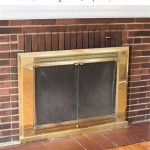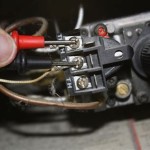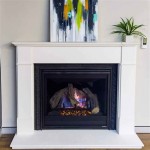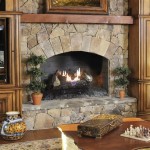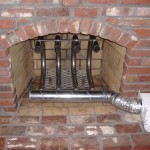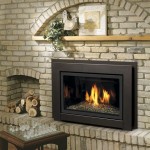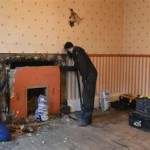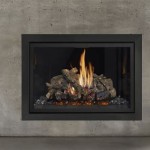Smoking Fireplace Solutions: Diagnosing and Resolving the Issue
A fireplace is intended to provide warmth and ambiance. However, a smoking fireplace can quickly transform this comforting feature into a frustrating and potentially hazardous problem. Smoke billowing into the room instead of rising up the chimney indicates an issue requiring prompt attention. Understanding the reasons behind a smoking fireplace and implementing effective solutions are crucial for maintaining a safe and functional heating appliance.
The problem of a smoking fireplace is often multifaceted, stemming from a combination of factors related to chimney structure, airflow dynamics, and operational practices. Identifying the root cause is the first step towards implementing a lasting solution. Ignoring the issue can lead to indoor air pollution, potential fire hazards due to creosote buildup, and damage to the home's interior.
Identifying the Cause of a Smoking Fireplace
A systematic approach to diagnostics is essential for pinpointing the reason behind a smoking fireplace. The process should begin with a visual inspection of the chimney, fireplace, and surrounding area. Several common culprits contribute to the issue:
- Chimney Blockage: This is a frequent cause, resulting from accumulated creosote, bird nests, leaves, or other debris. Blockages restrict airflow, preventing smoke from escaping efficiently.
- Downdraft: External factors, such as wind conditions or tall trees near the house, can create downdrafts, pushing air down the chimney instead of allowing it to rise.
- Inadequate Chimney Height: If the chimney is not sufficiently tall compared to the roofline or nearby structures, it may not generate enough draft to effectively exhaust smoke.
- Negative Air Pressure in the House: Tightly sealed homes can experience negative air pressure due to the operation of exhaust fans, furnaces, or clothes dryers, drawing air down the chimney.
- Damp Chimney: Moisture within the chimney can cool the flue and impede draft, especially during initial startup.
- Improper Fireplace Damper Operation: A damaged or improperly adjusted damper can restrict airflow and contribute to smoking issues.
- Fireplace Design and Construction: Fireplace design flaws, such as an improperly sized firebox or smoke chamber, can hinder efficient smoke evacuation.
Each of these potential problems requires specific diagnostic steps to confirm its presence. A professional chimney sweep or inspector can conduct a thorough examination using specialized tools and techniques.
Clearing Chimney Blockages and Addressing Draft Issues
Once the cause of the smoking fireplace is determined, appropriate corrective actions can be taken. Addressing chimney blockages and improving draft are often the initial steps.
Chimney sweeping is a critical maintenance task that removes creosote and other debris. Regular chimney sweeping, ideally annually, is recommended for all fireplaces, regardless of frequency of use. For homes with frequent fireplace use or those burning wood that produces more creosote (e.g., softwoods), more frequent sweeping may be necessary.
Downdrafts can be mitigated by installing a chimney cap or wind directional device. These devices redirect wind flow to prevent it from entering the chimney. Selecting the appropriate chimney cap or device requires careful consideration of the specific wind patterns around the house. Extending the chimney height can also help to overcome downdrafts, especially in situations where the chimney is too short compared to the roofline.
Addressing negative air pressure within the home often involves providing a source of makeup air. This can be accomplished by slightly opening a window near the fireplace during operation. Installing a dedicated outside air vent near the fireplace can also provide a more permanent solution. These vents allow fresh air to enter the room, balancing the air pressure and preventing the fireplace from drawing air down the chimney.
Optimizing Fireplace Operation and Maintenance
Beyond addressing structural or environmental factors, proper fireplace operation and maintenance play a crucial role in preventing smoking issues. Several best practices can be implemented:
- Burning Seasoned Wood: Seasoned wood, with a moisture content of less than 20%, burns more efficiently and produces less smoke and creosote. Unseasoned or wet wood releases excessive moisture, which cools the flue and hinders draft.
- Building a Proper Fire: Constructing the fire correctly, with adequate airflow between the logs, ensures efficient combustion. Using a top-down burning method, where the fire is started at the top and burns downwards, can also reduce initial smoke production.
- Warming the Chimney Flue: Before lighting the main fire, warming the chimney flue with a rolled-up newspaper can help to establish a draft. This is particularly important in cold weather when the flue is cold and stagnant.
- Maintaining the Fireplace Damper: Ensure the damper is fully open before lighting the fire and remains open until all embers are extinguished. Regularly inspect the damper for damage or corrosion.
- Regular Inspections: Schedule regular inspections by a qualified chimney sweep or inspector to identify potential problems early on. This proactive approach can prevent minor issues from escalating into more serious and costly repairs.
By understanding the potential causes of a smoking fireplace and implementing the appropriate solutions, homeowners can ensure a safe, efficient, and enjoyable fireplace experience. Consulting with qualified professionals is essential for diagnosing complex problems and implementing effective corrective measures. Regular maintenance and responsible operation are key to preventing smoking issues and ensuring the long-term functionality of the fireplace.

Why Your Fireplace Is Smoking How To Fix A Smokey

Why Is Smoke From My Fireplace Entering Home Siskiyou County Holy

Smoky Fireplace Prevent Chimney Smoke From Entering Home

Why Is My Fireplace Smoking Lackawanna County Pa Integrity Chimney

Constant Fireplace Smoking Is This A Non Working

Fireplace Accessories Full Service Chimney

The Fireplace Smoke Guard A Simple Inexpensive Solution 503 583 5077 Willamette Chimney

Outdoor Smoky

This Is Why Your Fireplace Smoking A 1 Quality Chimney Cleaning Repair

Fireplace Solutions Build A Chimney Design Outdoor Designs

